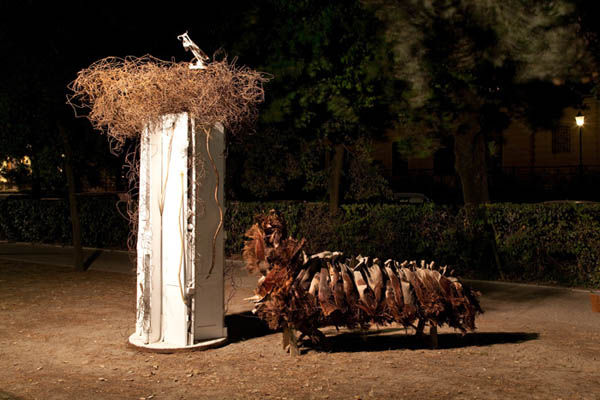ITALY - ERCOLE PIGNATELLI
When he was nineteen years old, and Raffaele Carrieri had nicknamed him swallow-boy, he painted large cups, lamps, bucrania, tablecloths inspired by Caravaggio, chairs, thorny thistles, southern sweetsmelling fruits. His masters were Guttuso, Pignon and Fourgeron. Later he recovered the Cubist space construction to create skilfully constructed Still-lifes which he completed by charcoaling and scratching them. In the fifties he began to portray fleshy women with a secret sensuality. The composition becomes plastic and plays by seeking a nearly sculptural three-dimensionality. His works of this period are penetrated by something baroque and mellifluous, by the smell of a land facing the Ionian Sea. Nature is overbearing, and plays a self-evident leading role. The lights, the colours and even the smell of Pignatelli’s paintings tell of the sea, sumptuously laid tables, frivolous loves, starry nights. In the Seventies it was the turn of the nativity landscapes. Apulia breathes in the summer nights after the daily glowing heat. Sometimes his oneiric, fairy- tale constructions somehow remind us of De Chirico, but they keep the rigorous Picassian setting of the beginning. At the end of this exuberant decade some animals appear every now and then, mainly in the Dry lands crossed by snakes, which will remain in the artist’s symbology for ever, both in the paintings and in the rare sculptures. And one of these sculptures has arrived at OPEN 12: a beast which the artist from Lecce manufactures with recyclable materials. An extraordinary presence, which sums up the sense of living on the earth. These wonders of intelligence were born for fun. Pignatelli is always thinking of his work. While he is eating, while he is talking, while he is staring at a landscape, while he is taking photos. When he gets angry, when he answers the phone brusquely, when he impatiently looks for someone by phone. With the energy and the arrogance of a boy. With the amazement and the cowardly freedom of a boy. So, while the gardener was sweeping up dead palm leaves dried by the burning sun in his house at the seaside, he said, “Do not throw them away. They might be useful”. They were used to create this primitive animal poking about at the foot of a column-tree, on top of which a cartoon-like bird of prey has built its nest. The bird is a little confused, because the straw used to build its house is an old hank of wire which forms an incredible wig halfway between engineering and Arte Povera, recalling the period of the Basements- Oases. Pignatelli’s imagination is inexhaustible. To its machine, which contains the writing of the universal genoma, he added dismantled shutters – goodness only knows where he got them from. Included in the rest of the construction, they formed a stiff framework with cracks on the inside. By peeping inside the work you can see that the nest wire has come all the way down. In the bowels of the sculpture there is the entangled future of the earth. Arca.
Text by Anna Caterina Bellati
